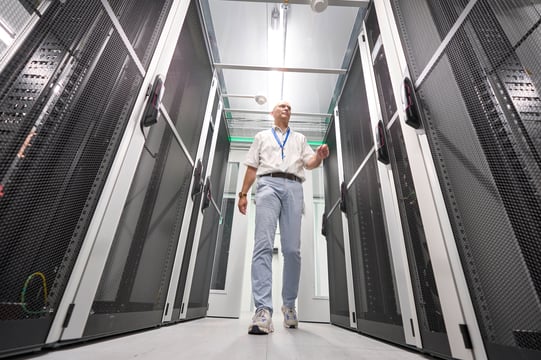
IT at a Crossroads: Rising to the Challenge of a Changing IT Landscape
The IT sector is currently experiencing a period of huge, complex change, driven by multiple sources, which presents a formidable challenge for CIOs and tech teams.
Emerging technologies, seemingly appearing overnight, are propelling the digital landscape forward, each innovation promising a competitive advantage. The challenging task faced by IT leaders is to assess their merits amidst a range of security concerns, data protection mandates, and the imperative to deliver exceptional customer experiences. Which innovation(s) will provide the greatest long-term value/benefit for their businesses is very hard to predict when there is so much uncertainty around the direction and speed of future developments.
Managing all this requires high levels of agility and significant resources to identify solutions and implement robust responses, whether these are software-related, or infrastructure investments.

Embracing Cloud and Edge Computing
For example, migrating IT services to the cloud has been a popular strategy in recent years, with promises of speed, scalability, and cost-effectiveness. However, there are some organisations who are now reviewing this strategy, particularly since the advance of the IoT and machine-to-machine learning which has led many to consider pairing cloud with on-site systems. Moreover, public cloud operators themselves face their own challenges, from energy consumption, to cybersecurity, supply chain issues, and staff shortages, which may limit future capabilities to expand at pace.
Meanwhile, the rapid rise of edge computing has provided its own paradigm shift, decentralising processing power by bringing it closer to the data source. This approach yields tangible benefits: lightning-fast speeds, minimal latency, and robust security at the network's periphery. It’s proving invaluable in delivering real-time data analysis for informed decision-making, and seamless customer experiences, while also supporting optimised performance and predictive maintenance for seamless operations.
Data Centre Design for Resilience
To design-in resilience, IT leaders have traditionally focused on allowing sufficient capacity for expected system refreshes over the projected lifespan of their data centres. This has means designing for rack space, power, and cooling applications, based on predicted demand and consumption rates. However, the rise in processing power and the additional energy needed to run AI and digital twin tech software means that there has been a rapid increase in IT power densities. These almost certainly exceed most, if not all, recent data centre design predictions by some margin.
This is where expert infrastructure partners will play a crucial role in the coming decades.
IT professionals overwhelmingly need infrastructure partners who possess a deep understanding of their complex needs to give business leader (and investors) confidence. We’re seeing increasing attention being paid to modular, scalable solutions which allow data centres to adapt to unforeseen demands and thereby accommodate future expansion. These pre-configured centres provide fast, secure, accommodation to protect delicate IT componentry wherever it is deployed, unlocking Industry 4.0 potential.
It’s a flexible, forward-thinking approach which has wide applications in even the most inhospitable environments.
Conclusion: Embracing the Future with Confidence
In Rittal’s new IT ebook, we consider all these issues in more detail. We look at how IT strategies require flexibility and a proactive approach to be fit-for-purpose into the future.
And we consider how, by embracing the transformative potential of edge computing and establishing partnerships with the right infrastructure providers, IT directors can transform challenges into opportunities, leaving the labyrinth behind and forging a path to long-term success in the ever-evolving tech landscape.



